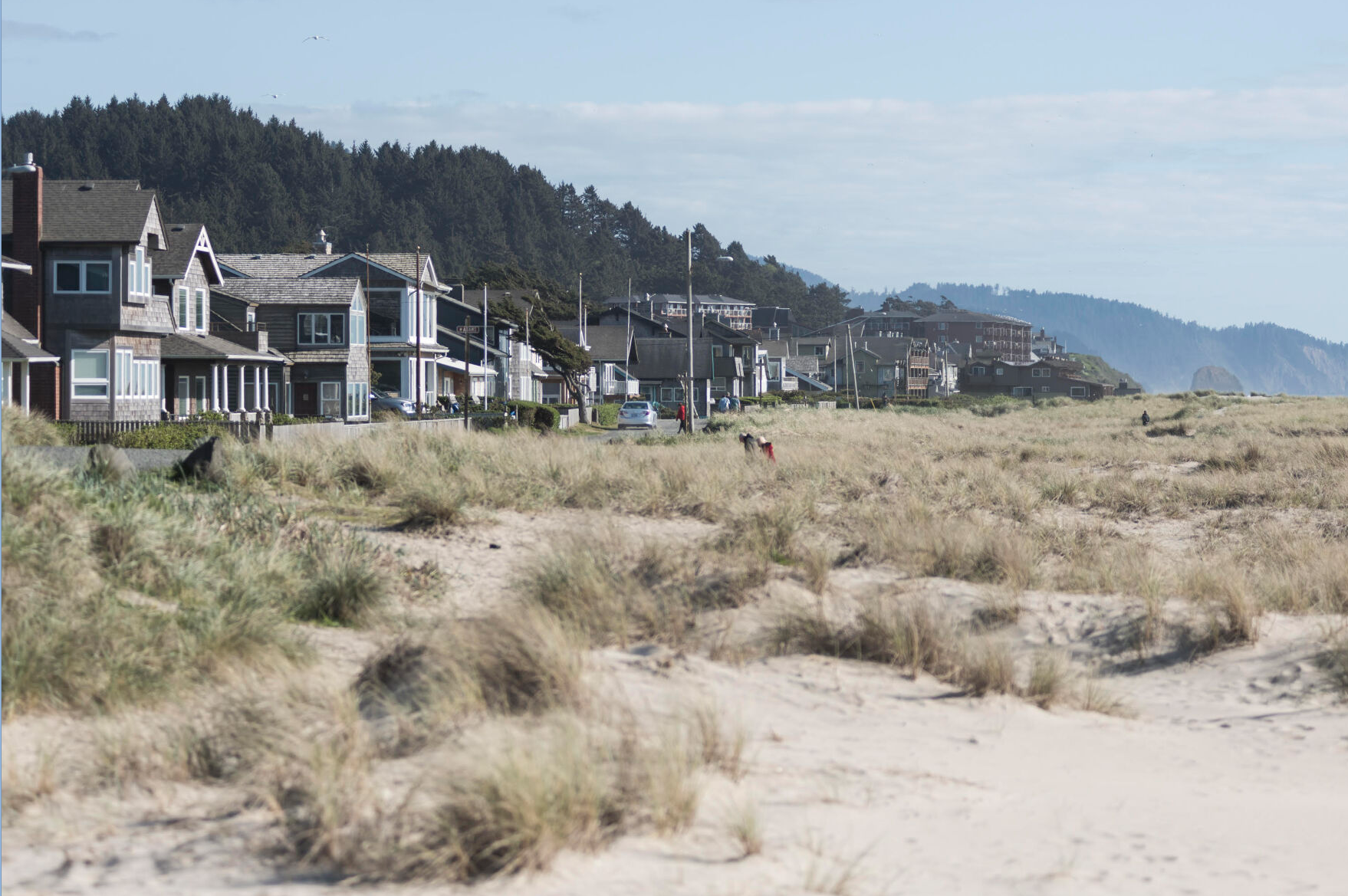Chainsaw artists revved up about creating critters
Published 2:35 pm Tuesday, April 19, 2022

- Chainsaw artist Blaine Gunkel with the tools of his trade.
OCEAN PARK, Wash. — Michelangelo is believed to have said, “The sculpture is already complete within the marble block, before I start my work. It is already there, I just have to chisel away the superfluous material.”
Trending
Blaine Gunkel would laugh at being compared to the 16th-century Italian genius.
But he does view his chainsaw art the same way. For him, a block of cedar already contains an eagle, a fish, a bear and sometimes, an ice cream cone.
He just has to free it.
Trending
“It’s being able to look at a log and you remove the negative and it is in there,” he said. “I have never been an artistic person. I couldn’t even draw you an artistic stick person, but I can carve a bear or an octopus or a fish.”
Gunkel and Kim Dill are partners in life and in Bear Creek Chainsaw Carving. She prefers to downplay her role as his carving assistant, keeping saws fueled at contests, handling sales at shows, but it’s evident she is as enthusiastic as he is.
“We are an excellent team,” Gunkel said.
The couple moved to the Long Beach Peninsula about nine months ago, fulfilling a dream of living at the beach, using their Ocean Park acreage as home base for attending Northwest chainsaw carving shows.
Inspired by masters
Gunkel, originally from Montana, grew up in Wenatchee, attended Central Washington University, and had several careers including a stint in the U.S. Army. Dill is from Texas and works as a recruiter in the financial services world.
More recently, Gunkel embarked on a rewarding later-life career as a paraeducator in Belfair. “I loved helping kids,” he said. “I would see the kids go from struggling and then having them bring their report cards to you the next year. I got a small glimpse into the rewards that teachers receive.”
When COVID restrictions shut that down, the couple looked for other options, first close to Ocean Shores, which hosts annual carving events, and then Ocean Park. Wood creations had been Gunkel’s hobby for about five years, inspired in part by viewing YouTube tutorials by master carvers like Steve Backus, of Whidbey Island, then later meeting him.
The interest mushroomed for Gunkel, who now considers himself in the semiprofessional class. He has been inspired by artists from Mongolia, Japan, Europe and around the Northwest. He and Dill attend multiple shows each year, displaying their work and competing. Some contests offer cash prizes; competitors are often asked to participate in a “quick carve” and produce a named critter from a provided block of wood in just 60 or 90 minutes. Sometimes it is broad, like a farm-related item. Rules specify what tools can be used.
The rewards go beyond prizes or sales revenue.
“I love to make people smile,” Gunkel said. “I love it when people have that some kind of wonderment — ‘How do they do it?’”
His work has included fish, an octopus, whales, turtles and birds like cardinals, eagles and herons. Bears are common. “They are cute and people love them,” Dill said, “and every single one is different.”
Buyers place them on their front porches. “Bears with signs that say ‘Go away’ sell three times faster than the ‘Welcome’ bears,” she laughed.
“Bar control” is a key learned skill for chainsaw artists. Many early efforts, like one of Dill’s fish, end up much smaller than planned because chunks are inadvertently sawn away. One way to learn is “cut for cut,” where teacher and pupil carve their own similar-sized piece of wood alternately. As her skills have improved, she has created a bear, a mushroom, a tree and a gnome. Both donate their items for charity auctions; one tree wall hanging by Dill sold seven times, raising $350.
But at public events, she is happy to stay in the background, handling sales and being a supportive assistant. “It’s definitely rewarding, but I don’t want to keep bothering him,” she said. “At shows, I don’t carve because he is in his ‘zone.’ I love to finish, sand and paint. And I oil and gas the saws.”
Tempted to keep
At 61, Gunkel enjoys the physical and mental challenges his art provides. He is fastidious about safety, always wearing gloves, eye and ear protection, and kevlar chaps to protect his legs. Sturdy scaffolding is preferred to risky ladders when creating taller pieces with unforgiving 20-inch saws.
Like artists in other media, his inspiration comes from music. “I want to go out and carve. It is good physical exertion,” he said. “The music, rap, country, Christian, I listen to … I don’t know if it’s the energy in the songs …”
As a dehumidifier whirred in his packed display area drying a dozen smaller wooden creations, he thumbed through a 2-inch thick photo album. It showed dragons, snowmen, items with Seattle Seahawks logos, customized family benches with kids’ handprints and apples and pencils created for teacher appreciation days at his last job. There was even a hamburger and french fries.
Dill sometimes laments their departure. “There’s so much I want to keep for our house!” she smiled.
Every photo has a story. One wooden bench incorporates a grandfather’s metal Dodge Ram tailgate. The most unusual was an urn, created for a fellow artist who wanted her cremains placed in a carved box shaped like music icon Prince’s love symbol. The most difficult was his largest, an 18-foot tree stump carved in place with an eagle, a whale and a turtle, with rocks and starfish around the base.
And the most poignant always stirs his respect for fellow veterans. “The one that has brought tears to my eyes is the helmet, rifle and boots of a soldier’s cross,” he said. “People come to shows to watch you carve, and you can see who has been in the military. They have these memories … it warms my heart.”
Gunkel’s L-shaped yard on his Ocean Park acreage is stocked with three waist-high 6-foot logs that he has cleared from neighbors’ properties. Cedar’s usually fragrant smell and insect-resistant quality make it his preferred wood, although he sometimes uses driftwood. He scooped up a handful of sawdust to inhale its scent, labeling it “man glitter.” It adorns his black sweatshirt.
Recent popular items have been bird houses with “spirit faces.” He uses the fire from a weed burner to darken the completed box, then brushes it vigorously to create color which highlights its texture. A similar technique produced smooth-backed turtles which had been burned but appeared as if stained.
He sees no limit. “I like to carve something I have never carved before,” he said.
Inevitably, he is his worst critic.
“I see the fault in all of them.”









